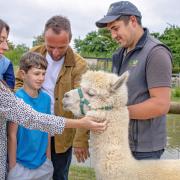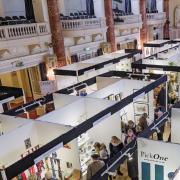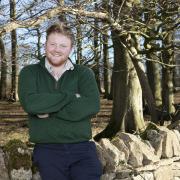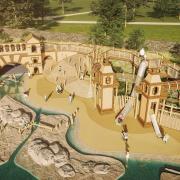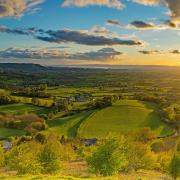Matt Austin is a Director at Austin Design Works, a RIBA Chartered architectural and landscape design practice in Nailsworth. Here, he discusses the process for gaining planning permission for rural builds, from holiday lets to businesses and barn conversions

Starting a new-build in a rural area is always difficult - planning conditions are strict in the Cotswolds, so on the face of it it’s very hard to do much.
Taking a scheme to planning is a long process.
It often requires supporting information including detailed design statements, historic research and visual impact assessments, and further specialist reports might also be necessary.
Think ecology and archaeology.
But there are, of course, some cases where a new dwelling in a rural area will be supported under the Country House clause, if the design is truly exceptional.
Take Swinhay House, for example - the home we built for Sir David McMurtry, Executive Chairman of Renishaw.
It was a £30m project and our planning application was successful in no small part because we could demonstrate not only its exceptional design, but its relationship to the Cotswold landscape.
More readily achievable for most landowners who have various outbuildings are barn conversions, particularly for holiday lets.
Current planning policy rides on permitted development in settlement areas, as defined in the Local Plan.
So if, for example, there’s a tumbledown barn in the middle of a field that meets that criteria, and you can demonstrate some form of infrastructure that supports holidays and tourism - ie easy access to the site; proximity to a visitor attraction; if it’s tagged on to a hamlet; if there’s a pub nearby - then you are in with a good chance of having it passed.
One example is Little Pinnolds in Waterley Bottom, a tumbledown sheep shelter in the corner of a field.
The owner, who lives in Scotland, wanted a holiday let for him and his family and friends.
We found old photographs showing a long-gone gabled lower part of the building, which we were able to recreate to form the bedrooms using wooden cladding and clay pan tiles.
But of course holiday lets have their limitations as to how many days a year you can use them.
An alternative route for landowners is a conversion to house a rural business, which there is support for in current planning legislation, provided that business is specific to its place.
To add residential to that business is necessarily more difficult.
So for example, a stonemason working at an old quarry may be able to make his yard there, but to make a business case for having a new family home on site would be a more complicated consideration.
Without an agricultural tie, that case for living there may be a bit more of a slow burner.
We would have to present a case focused on that settlement maintaining the rural community, of sustainability in terms of travel and infrastructure.
One project, Mill Barn in Newent, involved two barns next to each other - buildings that we convinced the planners could have a use, but had fallen into disrepair.
Similarly, we have been working on the renovation of Freams Farm, a sprawling, listed Cotswold stone farm in Cranham.
It was a complicated project not least because the whole property - the farmhouse, cow byres, wagon shed, threshing barn - was on the Buildings At Risk Register.
It called for a sensitive conversion, and following detailed discussions with planning consultants, we were able to create a guest wing out of the cow byres, a stunning swimming pool in the threshing barn, a glazed music room in the wagon shed and a glass link connecting the main house to all the ancillary accommodation, including staff quarters.
Properties like that are few and far between now, though there are some left, and gaining planning permission is possible.
But be prepared for a 10-15-year project at this scale. It’s not a quick fix by any means.
Visit the Austin Design Works website.
Read our interview with Rachel and Matt Austin of Austin Design Works here.




